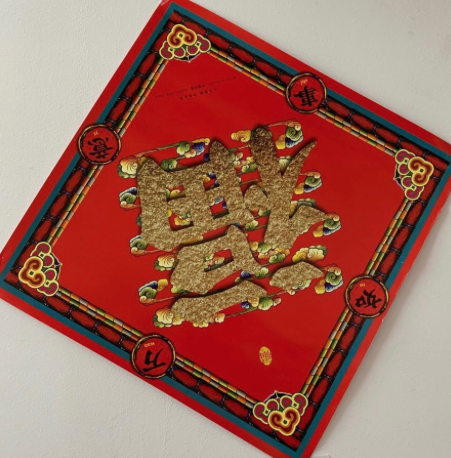新年快乐: Happy New Year!

May you be reflected with good fortune, happiness, and success!
February 26, 2021
Every year, on December 31, while some Americans watch the Ball Drop and countdown to midnight, millions of people wait for their celebration of the New Year. The Lunar New Year, based on lunisolar calendars, is determined by cycles of the sun and moon. The appearance of the first new moon is traditionally celebrated in East Asian countries including China, Vietnam, Singapore, and South Korea, for 15 days. The 2021 Lunar New Year dates from February 12 to 27, ushered by the Ox (a Chinese Zodiac Sign) which is characterized by traits of diligence, patience, reliability, and stubbornness.
Although the specific Lunar New Year celebration varies from culture to culture, the majority of East Asian countries share similar celebrations. However, given the pandemic, many had to switch to online gatherings. For example, the FLHS Asian Cultures Club hosted a virtual new year event, filled with music, trivia, and crafts, to accommodate the circumstances of this year. Despite the changes, many traditions, like feasting, performances, and the giving of red envelopes, continued to prevail.
Feasts of Luck
Food is one of the biggest aspects of the Lunar New Year. It symbolizes new beginnings and luck for next year. Family and friends gather to eat delicious meals together, creating harmony and closeness. Kristina Yuan, Vice President of the FLHS Asian Cultures Club, who works to promote an inclusive community explains, “This holiday provides time for families to reunite with one another as many remain separated due to work,” giving extended families the opportunity to have “vacation” time with their loved ones.
Spirited Performances
While enjoying homemade meals, families sit together to watch traditional performances. Countries like the Philippines, Malaysia, and China display animal dances in various forms. The most popular are lion dances that trace back to the story of “Nian,” an ancient beast who is said to scare and attack villagers at the beginning of each year. These traditional performances can occur in streets or on stages open to the public. As they watch performances, families can discuss events of the past year and count down to the new year.
Pockets of Prosperity
Known as “Li Xi ” in Vietnamese and “Hong Bao” in Mandarin, red envelopes are given to children as tokens of fortune. When giving and receiving red envelopes, there are important customs to follow. If one is giving a red envelope, use crisp new bills and avoid coins. According to Seattle Times, “Upon receiving a red envelope, first offer a New Year greeting wishing the giver good fortune in the New Year. It is polite to take the envelope with both hands and do not open it in front of the person who gifted it.” The amount of money can vary depending on the relationship between the giver and receiver. Some envelopes can even contain up to hundreds of dollars!
The Asian Cultures Club at FLHS is working to recognize and celebrate the many diverse traditions, customs, and holidays related to Asian culture. Through fun, hands-on activities, cultures can be better recognized by communities.
Kristina Yuan explains, “The Lunar New Year, and other traditional celebrations, are important because the world is made up of so many different people. Yesterday, I attended the virtual Chinese New Year celebration, hosted by the FLHS Asian Cultures Club, and I had a lot of fun exploring this holiday.”
The Asian Cultures Club celebration of the Lunar New Year provided an opportunity for FLHS students and staff to come to understand the cultural heritage of many students. Likewise, many students received an opportunity to express themselves on a personal and cultural level—ultimately creating a more inclusive learning environment.

